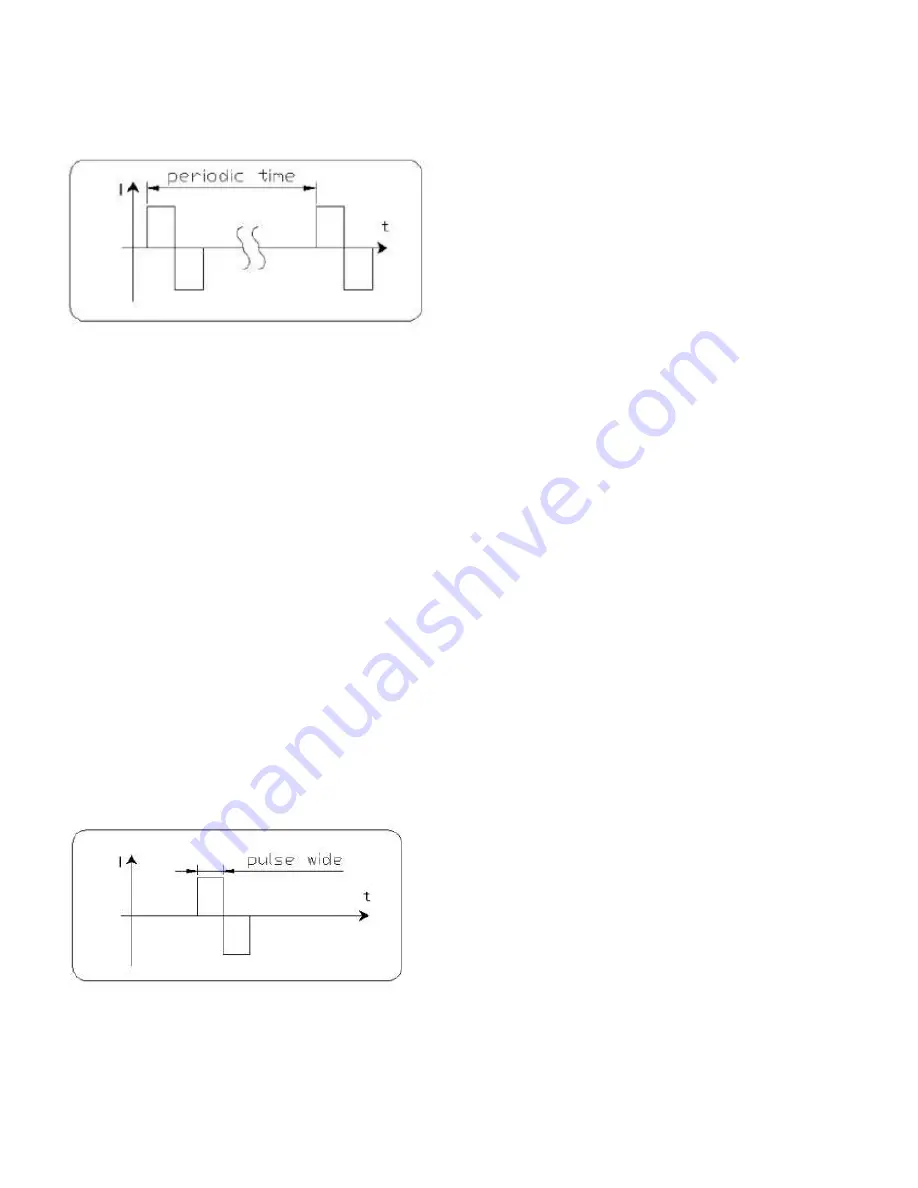
6
5.2 Pulse frequency
Frequency indicates the number of individual pulses per second, and is indicated in Hz (Hertz= pulses
per second). It can be calculated by working out the inverse value of the periodic time.
Different types of muscle fibres react preferentially to different frequencies:-
Slow-response fibres tend to react to lower pulse frequencies up to 15Hz, while fast-response
fibres only respond to frequencies over approx. 35Hz.
With pulses of approx.45~70Hz, there is permanent tension in the muscle (tetany) combined with
premature muscle fatigue. Higher pulse frequencies can therefore preferably by used for elasticity
and maximum strength training.
For TENS:
A frequency of 110 Hz is good at blocking pain signals.
A low frequency of 4 or 10 Hz allows for the release of endorphins, the body's natural morphine-like
substances.
5.3.Pulse width
Pulse width is used to indicate the duration of an individual pulse in microseconds (millionths of a
second). Pulse width also determines the penetration depth of the current. In general a greater
muscle mass requires a greater pulse width. A higher Pulse Width is more also more likely to
activate pain nerves, so there is a fine balance between maximum muscle stimulation and tolerable
sensation.
EMS
50-400 depending on Frequency*
TENS
50 to 250
µS.
Summary of Contents for Sports TENS 2
Page 1: ...1 Sports TENS 2 INSTRUCTIONS FOR USE...
Page 2: ...2...
Page 4: ...4...
Page 40: ...35 20 TENS DERMATOMES...
Page 41: ...36 21 EMS Electrode Placement Chart...
Page 42: ...37...
Page 43: ...38...












































